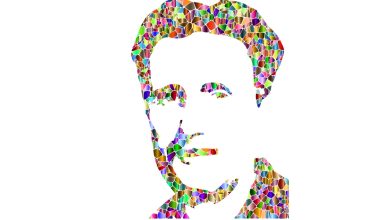Inflation Explained on a Napkin

People come up with all kinds of excuses for inflation. First, they told us there was no inflation. Then they insisted that it was transitory. Then they claimed it was caused by greedy corporations. Later they shifted the blame to Putin. But none of this gets to the root cause of inflation – the expansion of the money supply by the Federal Reserve.
This may seem complicated, but it really isn’t. In fact, as economist Dave Sukoff explains, you can demonstrate the root cause of inflation on a napkin.
![]()
The following article was originally published by FEE. The opinions are the authors and do not necessarily reflect those of Peter Schiff or SchiffGold.
Legend has it that back in 1974 Arthur Laffer explained supply-side economics on a napkin and the Laffer Curve was born. He concluded the napkin with, “the consequences are obvious!” In that particular case, it was that when you tax something more, you get less of it. And the important converse: lower taxes increase economic growth. (Laffer’s Curve was used to demonstrate that in some cases slashing tax rates can actually increase tax revenue.)
Similarly, simple demonstrations could be done to show that increasing the minimum wage reduces employment, or that free trade benefits both parties. With all the recent consternation about inflation, it is long overdue we take the napkin approach to show a simple truth: printing money is the root cause of inflation.
Sure, we could write books and academic papers, hold town hall meetings, and debate endlessly. For some economic issues, though, only a napkin is required. In order for napkin math to be applicable, the explanation must be intuitively obvious, empirically obvious, and, of course, the math is demonstrable on a napkin (or, the corollary to the Napkin Math Rule—a 900-word FEE piece).
At the outset, we need to realize that inflation is, above all else, a monetary phenomenon. When money is printed, prices in an economy rise.
Period. Full stop.
For the inflation napkin, we could start by drawing a historical graph of the money supply. It is no coincidence that the inflection point is March 2020. That is right around when the federal government ramped up the printing press, and lo and behold, inflation has run rampant since then.
The intuitive and elegant equation for the remaining space on the napkin involves a fraction. The denominator is the total supply of money. The numerator can represent almost anything. For the napkin, it’s simply X. If the denominator is increased, then the value of X, relative to the amount of money in the system, is less. As an example, a few people are stuck on an island where the only goods in the economy are coconuts. The total amount of money among the people is $100. On Monday coconuts are selling for $5 each. If on Tuesday the island government prints another $100, and nothing else happens, then the price of a coconut will be $10. As an equation, this would be 5/100=10/200. Since there are twice as many dollars in circulation, each dollar can buy half as much as it used to.
What if, though, we increase the supply of coconuts. Let’s suppose there were originally 20 coconuts. Then, by some miracle of nature, there were 40 coconuts. If the money supply increased from $100 to $200, then coconuts would still be worth $5. Thus, the island government could match the growth in the economy by printing money such that the money supply kept up with the supply of goods. If it prints additional money, above the growth, then prices will rise. We are still comfortably on the napkin.
Government is now, as it is wont to do, pointing the finger in all directions—except at itself.
The US economy is more complex than that, of course. But the logic and math still hold. The empirical evidence on inflation supports the simple logic and math—just as it repeatedly has for Laffer.
The first so-called stimulus bill of the Covid era passed on March 27, 2020—right around the inflection point on the money supply graph. It was $2.2 trillion. The second passed on December 21, 2020, for $900 billion of so-called stimulus spending on top of the omnibus spending bill. The third so-called stimulus bill, this one dubbed the American Rescue Plan Act, passed on March 10, 2021, and was $1.9 trillion, making it a total of $5 trillion of so-called stimulus spending. This is on top of the original spending trajectory. Since we are still on the napkin, we can approximate on the money supply graph: it is currently $22 trillion while extending the pre-inflection path would have it somewhere around $17 trillion. Thus, the money supply increased above its previous path by roughly the amount of the three so-called stimulus bills ($22T – $17T = $5T).
The resulting inflation has been so historically vast as to cause us to grab another napkin, or two. One might wonder, given the obviousness of the relationship between money supply and inflation, why inflation arrived so long after the passage of the various bills. The Napkin Math answer is both intuitively and empirically clear: we started seeing it much earlier, it simply manifested itself in other places. Again, more napkins would be required, but we could draw graphs of housing, stocks, bitcoin, stonks, SPACs, private securities, etc. It was happening the moment the printing presses started whirring. Asset prices inflated, and consumer goods followed.
Sadly, we all now are suffering for these policy blunders. The double whammy, of course, is that not only did the government print money, causing inflation, they did it in the midst of an economy-crushing pandemic. In a sense, our policymakers eviscerated the value of the dollar at the worst possible time. The consequences were obvious: a monumental transfer of wealth to asset holders, an insidious misallocation of capital, and the highest inflation in generations.
Government is now, as it is wont to do, pointing the finger in all directions—except at itself—and discussing policy solutions that not only do not address the root cause of the issue, but are almost certain to exacerbate it.
Spending and printing money does not, and did not, stimulate the economy—rather it is the root cause of inflation. As simple as the explanation is, the policy path is clear: stop spending, er, printing money!
About the Author
Dave Sukoff is an advisor to the investment management community and previously co-founded and ran a $500mm fixed income relative value fund. He is also the co-founder of a software company and inventor on multiple patents. Dave graduated from MIT, where he majored in finance and economics.
This article was originally published on FEE.org. Read the original article.
Call 1-888-GOLD-160 and speak with a Precious Metals Specialist today!
Buka akaun dagangan patuh syariah anda di Weltrade.
Source link







